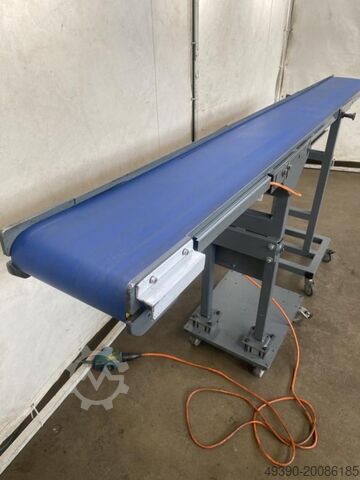Used Small Unicorn for sale (4,415)
 Königswinter
Königswinter Winder for filament / small hoses
PMHW250
 Sachsen
Sachsen Small-format delivery table
HorizonED-40
 Hessisch Lichtenau
Hessisch Lichtenau Conveyor belt, belt conveyor, timing belt conveyor, small goods conveyor belt
MK MASCHINENBAU2400 x 85

+44 20 806 810 84
 Schmallenberg
Schmallenberg Small parts cleaning spray washing system
Bous Reinigungs- & EntfettungsanlagenTrowamat XL
 Hörselberg-Hainich
Hörselberg-Hainich Mobile concrete mixing plant
CONSTMACH Concrete Mixing PlantSmall Mobil Concrete Mixing Plant 30M3/H
Discover more used machines
 Tildonk
Tildonk Coach
MercedesTourismo 15RHD / Full options / Small body damage
 Roosendaal
Roosendaal Container transportation
Desotnice 20FT/30FT ADR-Chassis for SMALL PRICE, li...
 Krefeld
Krefeld Die-cutting press for small formats
DestaSAK 450 KF3
 Ensisheim
Ensisheim Small Drilling/Milling Machine
ISERT ELECTRONICX 350 / Y 300 / Z 70 mm - 24000 RPM
 Babenhausen
Babenhausen Bread Slicer
LebemaOrion small
 Hessisch Lichtenau
Hessisch Lichtenau Conveyor belt, belt conveyor, belt conveyor, belt conveyor, timing belt conveyor, small parts convey
MFP Fördertechnik3100 x 600
 Częstochowa
Częstochowa Switchgear & components
FEMASMALL PRESS 2,5t
 Ankara
Ankara Small occupied space balances complete p
Bodori76000W
 Stuttgart
Stuttgart Automatic small parts warehouse for KLT 60x40x27
ViastoreKTL18500
 Åsby
Åsby Sawmill line for small logs
Söderhamns/Kockum240-12
 Gelsenkirchen
Gelsenkirchen Small series press, vulcanizing press
Hidrobrasil10 Tonnen Einzelständerpresse
 Hessisch Lichtenau
Hessisch Lichtenau Conveyor belt, belt conveyor, belt conveyor, timing belt conveyor, small parts conveyor belt, flat c
MFP Fördertechnik2500 x 250
 Thisted
Thisted SMALL CHEESE VAT WITH AGITATION
 Hessisch Lichtenau
Hessisch Lichtenau Conveyor belt, belt conveyor, band conveyor, magnetic conveyor belt, belt conveyor, small goods conv
NEUHÄUSER + BDL1700 x 50 /1,060 + 110S
 Hessisch Lichtenau
Hessisch Lichtenau Electric loading lift – pedestrian stacker, tiller stacker; for ergonomic handling of small loads, p
EXPRESSOLift & Drive 225P (lift2move)
 Hessisch Lichtenau
Hessisch Lichtenau Conveyor belt, belt conveyor, belt conveyor, belt conveyor, timing belt conveyor, small parts convey
MFP Fördertechnik2800 x 360
 Hessisch Lichtenau
Hessisch Lichtenau Electric loading lift - Mobilift for the ergonomic handling of small loads, pedestrian stacker, pede
TAWI TRANSORTPRO 140 M
 Hessisch Lichtenau
Hessisch Lichtenau Conveyor belt, belt conveyor, small goods conveyor
GURA2200x220
 Hessisch Lichtenau
Hessisch Lichtenau Electric loading lift – pedestrian stacker, pallet truck; for ergonomic handling of small loads, ped
EXPRESSOLift & Drive 175 (lift2move)
 Hessisch Lichtenau
Hessisch Lichtenau Electric loading lift – pedestrian stacker, pallet truck; for ergonomic handling of small loads, ped
EXPRESSOLift & Drive 125 (lift2move)
Used Small Unicorn (4,415)
Search Machineseeker now with more than 2,00,000 used machines:Browse through the most popular machine descriptions:
This may be of interest to you

+44 20 806 810 84










































































































































































































































